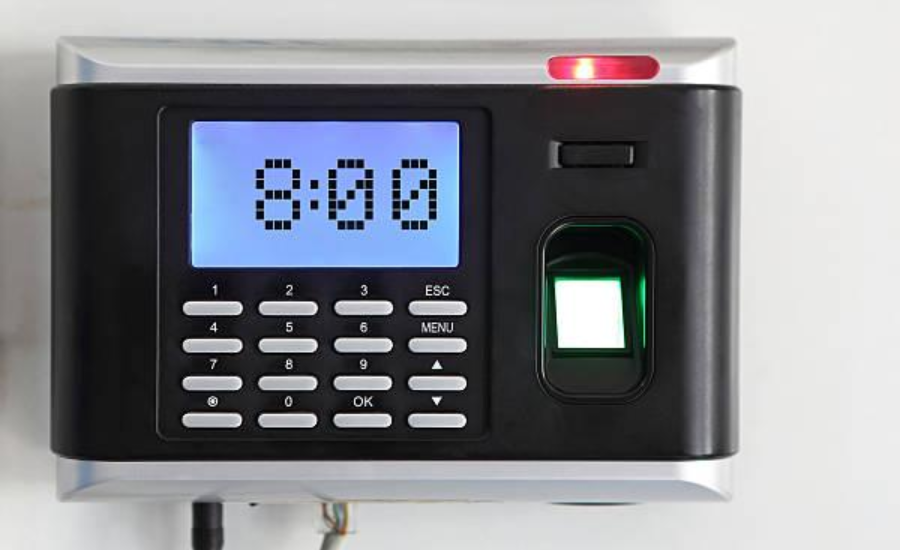In today’s fast-paced work environment, businesses are always looking for ways to streamline operations, improve efficiency, and reduce costs. One of the most effective solutions for managing employee attendance is the use of Biometric Time Clocks. These advanced systems eliminate the need for traditional punch cards or PINs, offering a more secure and accurate way to track work hours.
What Are Biometric Time Clocks?
Biometric time clocks are sophisticated systems that use unique biological characteristics—such as fingerprints, facial recognition, or iris scans—to verify an employee’s identity before allowing them to clock in or out. These devices ensure that only authorized personnel can log work hours, preventing buddy punching, time theft, and payroll fraud.
Why Businesses Are Switching to Biometric Time Clocks
Traditional time-tracking methods come with various drawbacks, including lost punch cards, forgotten PINs, and even dishonest practices. Here’s why more companies are embracing biometric time clocks:
1. Eliminating Time Theft and Buddy Punching
Time theft is a common issue in workplaces, where employees may exaggerate their work hours or punch in on behalf of a coworker. Biometric time clocks eliminate this risk by requiring a unique biological identifier, making fraudulent clock-ins virtually impossible.
2. Enhanced Accuracy and Efficiency
Unlike manual tracking or PIN-based systems, biometric time clocks provide real-time, error-free records of employee attendance. This eliminates discrepancies and ensures employees are paid accurately for the hours they work.
3. Streamlined Payroll Processing
Since biometric time clocks accurately record work hours, HR and payroll teams no longer need to spend hours verifying time sheets or resolving disputes. Automated time-tracking systems integrate seamlessly with payroll software, ensuring a smoother and more efficient payroll process.
4. Improved Security in the Workplace
Many biometric systems serve a dual purpose—they don’t just track attendance but also restrict unauthorized access to certain areas within the office. Whether it’s securing sensitive documents, restricting access to high-risk zones, or logging in to workstations, biometric authentication enhances workplace security.
5. No More Forgotten or Lost Credentials
With biometric time clocks, employees don’t need to remember passwords, carry key cards, or worry about losing punch cards. Their unique biological identifiers are always with them, making the process more convenient and hassle-free.
6. Compliance with Labor Laws
Regulatory compliance is a crucial aspect of workforce management. Many labor laws require accurate tracking of work hours, overtime, and breaks. Biometric time clocks help businesses stay compliant by maintaining tamper-proof records of employee attendance, reducing the risk of disputes or legal issues.
7. Cost Savings for Businesses
Implementing biometric time clocks can lead to significant cost savings. By reducing payroll errors, eliminating fraudulent timekeeping practices, and minimizing administrative workload, businesses can cut unnecessary expenses and improve overall productivity.
Common Types of Biometric Time Clocks
There are different types of biometric systems available, and businesses can choose one based on their needs and workplace environment:
1. Fingerprint Recognition
This is the most commonly used biometric time clock technology. Employees scan their fingerprint to clock in and out. It is highly accurate, cost-effective, and easy to implement.
2. Facial Recognition
Facial recognition time clocks use cameras and AI-driven technology to map unique facial features and verify employee identities. They are ideal for hands-free authentication and workplaces where hygiene is a priority.
3. Iris Recognition
Iris scanners analyze the unique patterns in an employee’s eye to confirm identity. They offer top-tier security and accuracy but can be more expensive to implement.
4. Hand Geometry Scanners
These devices measure the shape and size of an employee’s hand to authenticate identity. While less common, they are still used in certain high-security industries.
Addressing Common Concerns About Biometric Time Clocks
Despite their many benefits, some employees and businesses have concerns about biometric systems. Here are a few common questions:
1. Are Biometric Time Clocks Secure?
Yes! Biometric time clocks use encrypted data storage, ensuring that fingerprints or facial scans are not stored as raw images but rather as mathematical algorithms that cannot be reversed.
2. What Happens If an Employee’s Biometric Data Fails to Register?
Most systems have backup methods, such as PIN entry or key cards, in case an employee’s biometric data is not recognized.
3. Can Biometric Time Clocks Be Used in All Industries?
Yes, they are widely used in various industries, including healthcare, retail, manufacturing, and corporate offices.
4. Do Biometric Systems Violate Employee Privacy?
No, biometric systems only store encrypted templates, not the actual images of fingerprints or facial features. Additionally, companies must comply with data privacy laws to ensure employee information is protected.
Conclusion
Biometric time clocks are transforming the way businesses track employee attendance. By eliminating buddy punching, reducing payroll errors, enhancing security, and ensuring compliance with labor laws, these systems offer significant benefits to both employers and employees. As technology advances, biometric time clocks will continue to play a crucial role in workplace efficiency and security.
If you’re looking for a cost-effective, reliable, and secure solution for workforce management, it’s time to consider implementing Biometric Time Clocks in your organization.
Stay in the loop for more updates and notifications: Insiders

